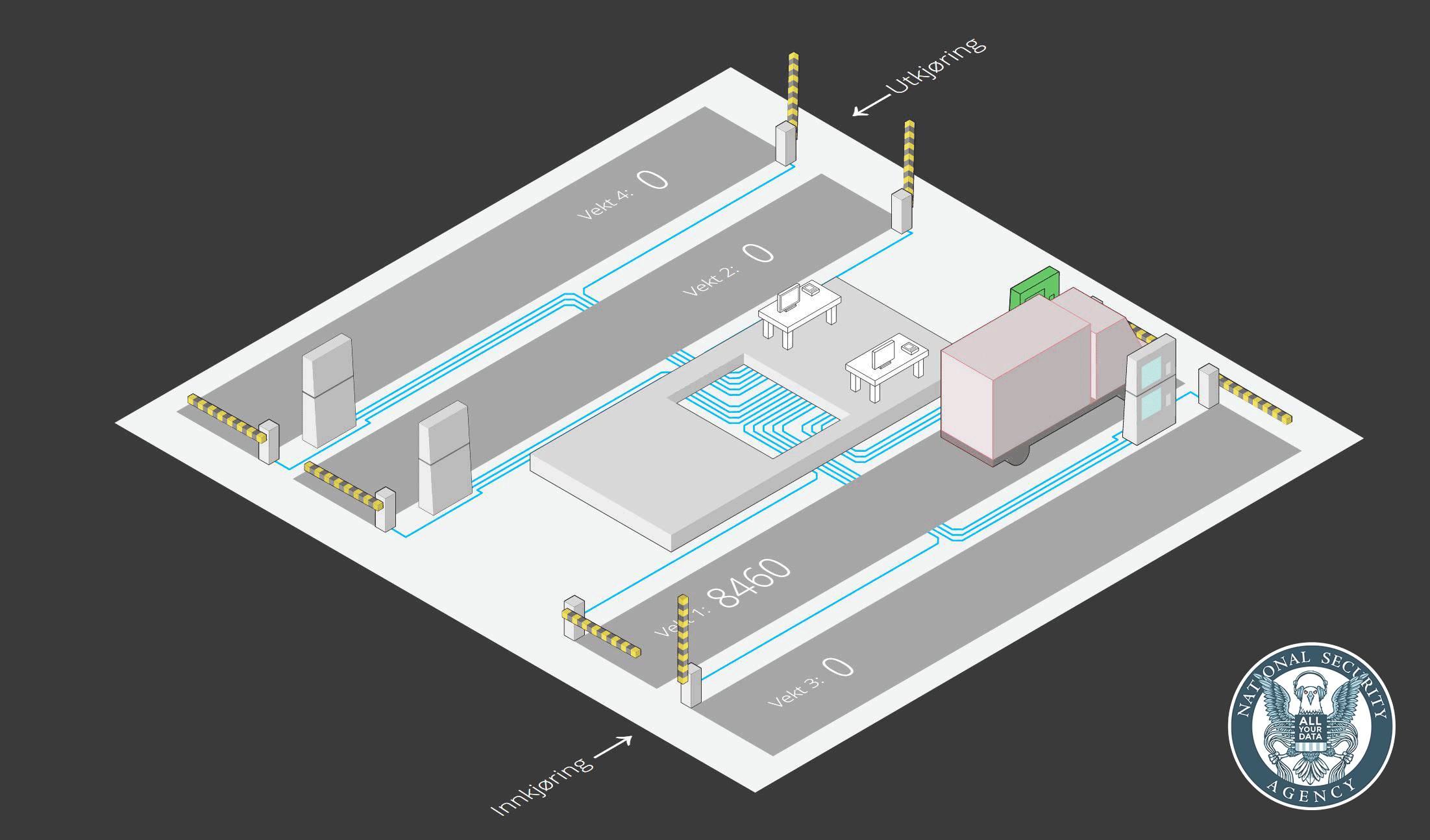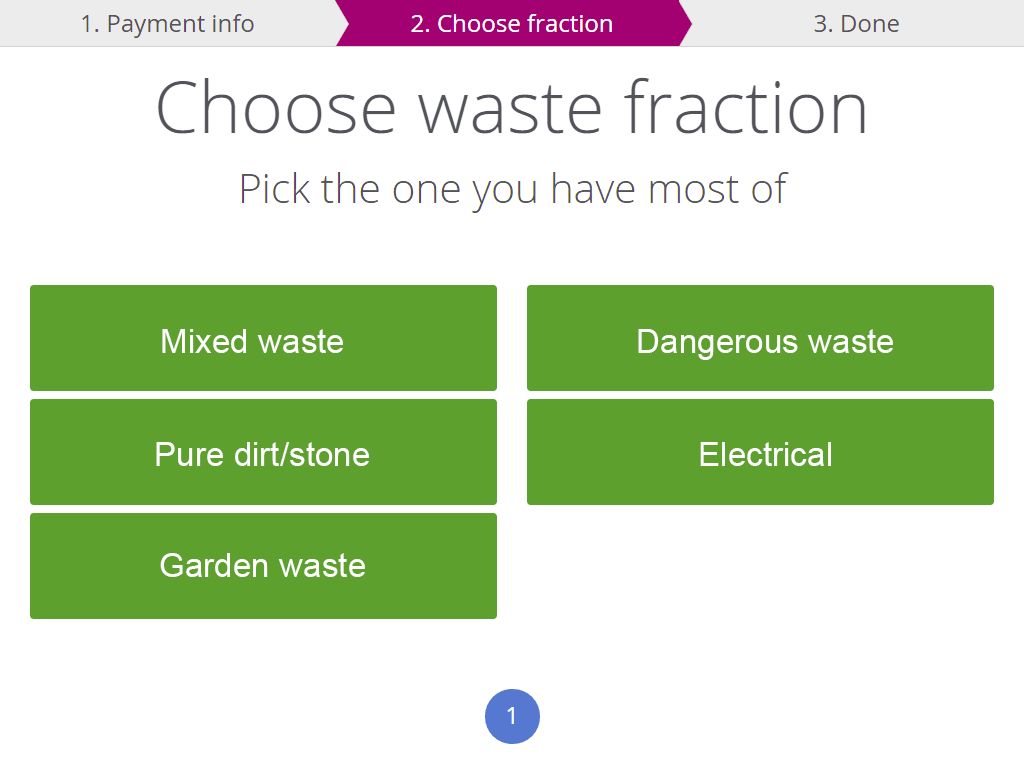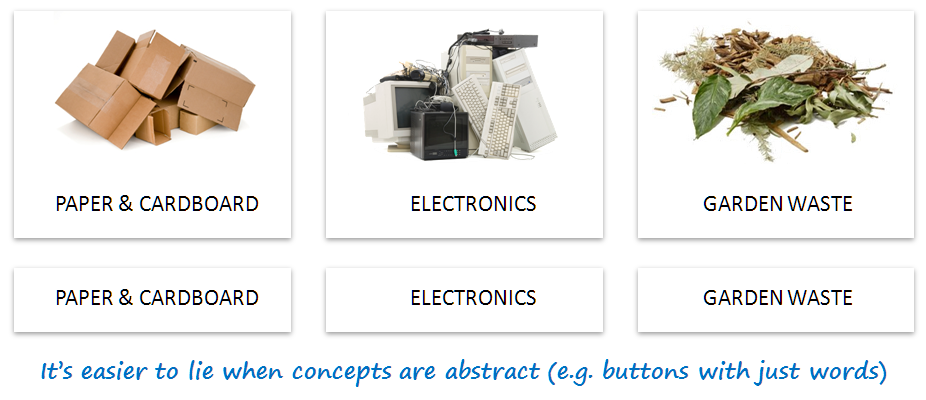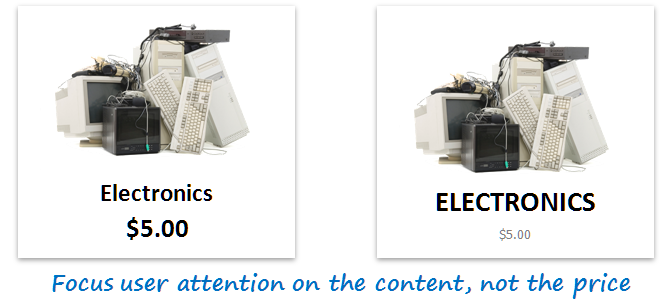My company creates solutions for waste management facilities. One particular piece of software is used on touch screens at the entrance of a facility. The municipiality runs the facility. We don't influence much how the facility is run.
The customers can deliver many fractions of waste, ranging from old paint to construction materials. Most of these Some of these have a cost per kilo, while others are free, and therefore we weigh the cars in and out. On the way in, the customer has to select what fraction represents the majority of his waste (and I've realized through the discussing that this sentence is a great source of confusion)
Here are the fractions that a customer can typically choose between:
- Pure garden waste (typically delivered on Saturdays): free
- Pure dangerous waste (paint, oil etc): free
- Pure electrical waste: free
- Mixed waste: cost
- "Pure mass" (stones, dirt etc): cost
Many customers select "Garden waste" as their main fraction, although their trunk is full of mixed waste.
So my question is this: How can I encourage honest user behavior in the UI? I could hide away the free fractions - but that would make the UI worse for those customers who are honest.
Currently we solve this by letting an operator approve any free fraction selection.
Process description
Here is a simplified description of the inbound waste delivery process:
Facility overview
The facility has four lanes. The two rightmost lanes are inbound and the two left are outbound. In the middle of the lanes, there is a small building with two operators.
The operators serve one inbound and one outbound lane. At times there is heavy traffic and the two operators are quite busy serving requests, either directly or via the the audio links to each payment tower.
Please select fraction
When the customer drives onto the weight, the gate behind him closes and a welcome screen displays: "Please register your payment card". The next screen lets him choose a waste fraction:
Please drive inside the facility
The gate in front of the customer opens and he can drive inside the facility.
One solution could be to automatically photograph each car on the way in, and then attach the photos to the order, but the customer didn't want to have all its customers photographed.
We deliver software and hardware. The municipiality runs the facility. We don't influence much how the facility is organized. We just try to make the municipality's dream come true with technology.
Here are some nice photos of the facility:
http://www.archello.com/en/project/recycle-plant-isi
Addressing questions
There are many great questions and suggestions, and I find the comment feature of SE hard to follow. Therefore I've repeated the questions and my comments here. I am amazed at your interest and level of involvement with my question. Kudos to you!
Does the operator inspect the waste in the car? Do users have an account or license plate that identifies them as repeat customers? It would help if you described the whole process (workflow) - tohster
The operator does not inspect the waste in each car. Any citizen are potential customers. The description has been updated to describe the process further.
I know you don't want to penalise honest users, but could you not just charge for garden waste? If it's all mixed waste it still needs to be sorted which incurs cost, and if isn't sorted it is either sent to landfill or for incineration and neither or those options benefit from it being garden waste over any other sort of waste. Also, by making the 'green waste' option free to dispose of the facility is surely encouraging those with more expensive and harmful waste to dispose of it elsewhere (maybe somewhere more harmful for the environment)? - Chris
It's not my call to make the garden waste free. It's political. Besides, a lot of people deliver legitimate free waste (that is pure and sorted). I want to handle those who deliver construction materials but press the "garden waste" button.
According to the operators at the facility, people press "Hageavfall privat" (Garden waste private) because all of them are trying to exploit the system, while I think they do so because they are confused. Most likely it's somewhere in between, and a lot probably press the button because "pick the one you've got most of" is confusing in its nature. Or maybe the users simply press the garden waste button because they know it's free and they think nobody will realize the mistake.
Fun fact: In Norway any citizen can deliver up to 1000 kg of free dangerous waste (paint, chemicals etc). Landfills were banned in 2009. All waste is either recycled or burned in controlled environments for energy production.
Have you looked into the idea of a "Selecting the wrong waste type is against the law. If found guilty, you could be fined $$$$." but in more succinct, passive-authoritative measures? Like announcing to train, store and other customers that there are plain clothed officers onboard all locations (there isn't) - insidesin
We have looked into this. However, it challenges the idea of having a simple and clean UI - and as others have addressed, adding shallow warnings don't influence much the dishonest customers. Also, we don't want to start out wrong by assuming all customers are planning to exploit the system (which is in effect what we would do, as everyone would see the warning)
Also, I strive to keep the UI simple and clean. Most drivers are already quite stressed as they enter the facility, and having them read more text won't ease their situation. Keep in mind that I love the honest customers. I want to use some kind of dark pattern in a way that encourages honest behaviour while not cluttering the UI.
Why don't you put some orwellian iconography by the 'garden waste private' button like a CCTV camera? That way you'd be suggesting that they're being watched and if they lie you'll find out. Sounds crazy, but if you want something dark and subtle you could do that....and put smiley faces or something less offensive by the paid options - Chris
Nice one :-) I believe images/icons are a great way to influence the mind of the user.
Once a citizen enters the facility, where do they actually dump their waste? If the waste disposal area is divided up by type of waste, you could limit access based on what they selected as their waste type(s). For example, issue a receipt with the selections on it and perhaps a bar code for each type of waste. They can only enter an area if they have it on their receipt. If they have batteries, they have to select batteries to dump in the batteries area, etc. – Joel Garfield
Nice suggestion Joel. However, that would complexify the solution much. When the customers enter the facility, they are lead through a path of many containers, one for each waste type. Everybody gets access to the entire facility.
Choose what you have the most of? What determines "more"? Yard waste will be lighter, but take up more room. I have 1 truckload of mostly yard waste... 2x5 gallon buckets of paint that weigh more than the yard waste... and 3 boxes of batteries. I have "More" containers of batteries. I have "More" weight in paint. I have "more" cubic footage of yard waste, because grass clippings are "light". What do I select? How can I "dishonestly" select something that is that ambiguous? If I have to choose in that situation, why wouldn't I choose the definition that best suits me? – WernerCD
You are correct. The sentence is inviting confusion. It originally came from the facility and in reality asks this:
"We realize your trailer or trunk probably contains a mix of different waste. Some of these are free to deliver, but most cost (a little) per kilo. We can only weigh your car pluss trailer once, and therefore we want to know which fraction makes the majority of your waste"
However, in reality 90 % of citizens come with a mix that qualifies to the fraction called "Mixed waste". As I've addressed in question 2, any citizen can deliver dangerous waste for free, so we are really trying to distinguish between a very few fractions like:
- Pure garden waste (typically delivered on Saturdays): free
- Pure dangerous waste (paint, oil etc): free
- Pure electrical waste: free
- Mixed waste: cost
- "Pure mass" (stones, dirt etc): cost
As wise man once said, you shouldn't try to solve a strictly psychological problem with engineering - and I concur. Real ("working", i.e. providing desired & consistent results) honesty can't be encouraged by neither smart UI nor any other kind of engineering, the very same way you can't design a law in a way that will make people more compassionate or intelligent. With engineerings you can only force things, not thoughts nor emotions. It's the users sole decision will they be honest or not - trying to manipulate user's emotions will usually backfire at you sooner or later. – vaxquis
This sounds like great wisdom, and I believe you are illuminating truth from one angle. However, we know that dark patterns work and I believe they can be used in a white hat fasion.
So what happened, what did the customer do? Okay- I asked the project manager today, and he said they have done the wonderful thing of implementing a feature that lets the people in the control "house" confirm or reject each time a customer picks a free fraction.
It's kind of sad, but not really surprising.
I hope the suggestions in this thread will spark interest and help others, even if none of the ideas have been implemented by the customer yet.






I have 1 truckload of mostly yard waste... 2x5 gallon buckets of paint that weigh more than the yard waste... and 3 boxes of batteries.I have "More" containers of batteries. I have "More* weight in paint. I have "more" cubic footage of yard waste, because grass clippings are "light". What do I select? How can I "dishonestly" select something that is that ambiguous? If I have to choose in that situation, why wouldn't I choose the definition that best suits me?